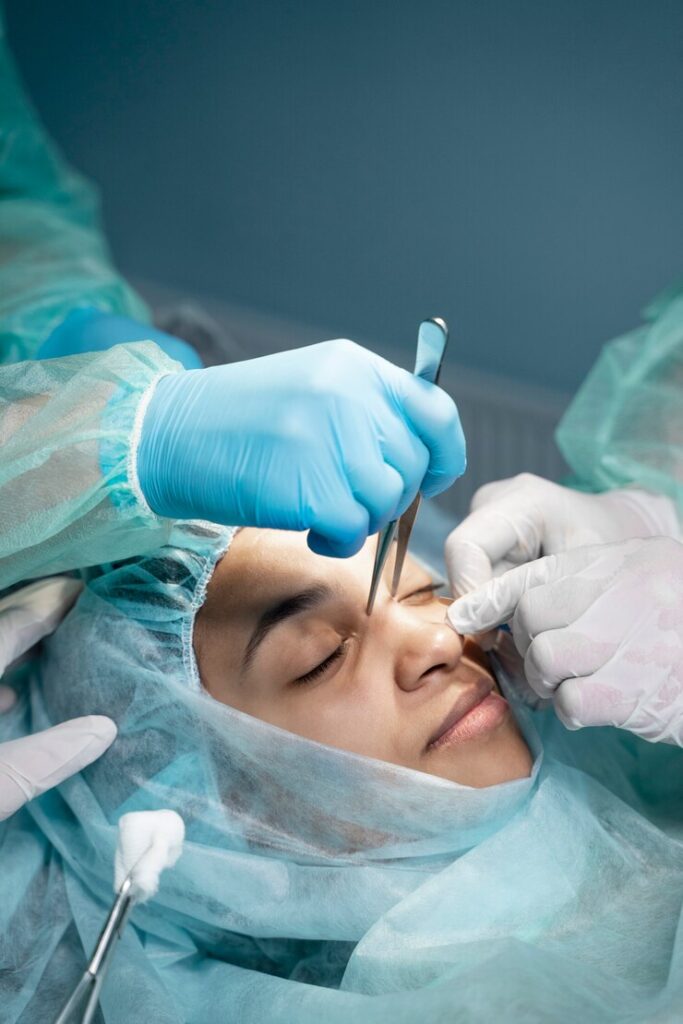When it comes to reshaping the nose for aesthetic or functional reasons, rhinoplasty stands out as one of the most intricate and refined procedures in the realm of facial plastic surgery. This surgical intervention requires not just technical precision but also an artistic approach to enhance the natural harmony of the face. A pivotal component in achieving successful results is the proper use and manipulation of cartilage. Surgeons often rely on cartilage to structure, support, and refine the nasal shape, making it a cornerstone of both primary and revision rhinoplasty. For those considering Rhinoplasty Dubai, understanding the critical role of cartilage can provide deeper insight into the treatment process and what it entails.
Understanding Cartilage in Nasal Anatomy
Cartilage is a flexible yet strong connective tissue found throughout the body, and in the nose, it forms the primary structure beneath the skin. The nose comprises different types of cartilage:
-
Upper Lateral Cartilages: Located along the midsection of the nose, these contribute to the nasal bridge and airflow.
-
Lower Lateral (Alar) Cartilages: These are responsible for the shape and support of the nasal tip and nostrils.
-
Septal Cartilage: The central structure that separates the nostrils and contributes to both support and shape.
Each type plays a crucial role in the surgical planning and execution of rhinoplasty procedures.
Why Cartilage Matters in Rhinoplasty
Cartilage serves as the structural framework of the nose. In rhinoplasty, whether the goal is reduction, augmentation, or correction of deformities, cartilage manipulation is essential. Here’s why:
-
Structural Support: Cartilage maintains the nose’s shape and strength. Surgeons must preserve or reconstruct this support to ensure both form and function.
-
Tip Refinement: The nasal tip is primarily composed of cartilage, making it the focal point of tip reshaping. Precise sculpting is required to achieve symmetry and balance.
-
Airway Functionality: Poorly planned cartilage removal can lead to breathing difficulties. Expert surgeons reinforce nasal passages using cartilage grafts when needed.
-
Aesthetic Balance: Cartilage helps create a natural-looking bridge, tip, and nostril shape. The surgeon must tailor the cartilage to align with the patient’s facial proportions.
Cartilage Grafting: Techniques and Application
Cartilage grafting is a key component in many rhinoplasty procedures, especially in structural or revision cases. When existing nasal cartilage is insufficient or compromised, grafts are introduced. These grafts may be harvested from:
-
Septal Cartilage: Preferred source due to its straight and sturdy composition.
-
Ear (Auricular) Cartilage: Used when septal cartilage is unavailable; ideal for contouring and soft grafts.
-
Rib (Costal) Cartilage: Provides ample material for major reconstructions.
Surgeons use cartilage grafts for several purposes:
-
Spreader Grafts: Placed between the septum and upper lateral cartilages to improve internal nasal valve function and bridge shape.
-
Columellar Strut Grafts: Support the nasal tip and improve tip projection.
-
Alar Batten Grafts: Reinforce weak nostrils to prevent collapse.
-
Shield or Cap Grafts: Enhance tip definition and projection.
These grafts are shaped and sutured with precision to achieve the intended structural and visual results.
Types of Rhinoplasty Involving Cartilage
There are multiple forms of rhinoplasty where cartilage manipulation is crucial:
-
Primary Rhinoplasty: The first nasal surgery, often utilizing native cartilage to shape the nose.
-
Revision Rhinoplasty: Performed to correct or refine previous surgeries; often requires cartilage grafts due to previous depletion.
-
Ethnic Rhinoplasty: Tailored to preserve ethnic characteristics while enhancing structure, often needing cartilage augmentation.
-
Functional Rhinoplasty: Focuses on correcting breathing issues, frequently involving cartilage support to restore airflow.
Each technique is customized, and the approach to cartilage is determined by the nose’s original anatomy and the desired outcome.
The Role of the Surgeon in Cartilage-Based Rhinoplasty
A skilled rhinoplasty surgeon must have a thorough understanding of nasal anatomy, surgical technique, and aesthetic balance. Cartilage must be reshaped delicately and reinforced appropriately. Surgeons evaluate:
-
Skin thickness
-
Existing cartilage strength
-
Nasal asymmetries
-
Facial proportions
The treatment approach is never one-size-fits-all. The doctor creates a surgical blueprint to determine how cartilage will be used, preserved, or augmented. Their role involves artistic sculpting combined with anatomical precision, using cartilage not only to enhance appearance but also to maintain long-term stability.
Benefits of Cartilage in Rhinoplasty
Cartilage offers multiple benefits in rhinoplasty, contributing to both functional and cosmetic success:
-
✅ Natural Results: Using a patient’s own cartilage ensures compatibility and realistic outcomes.
-
✅ Structural Stability: Cartilage maintains shape over time, reducing the risk of nasal collapse or deformity.
-
✅ Improved Breathing: Reconstructing nasal airways with cartilage ensures proper airflow.
-
✅ Minimal Rejection Risk: Autologous cartilage (from the patient’s own body) lowers the chances of complications.
-
✅ Custom Shaping: Cartilage can be carved and shaped with surgical accuracy to meet individual aesthetic goals.
These advantages highlight why cartilage is indispensable in advanced rhinoplasty techniques.
Long-Term Considerations and Healing
Once cartilage is reshaped or grafted during rhinoplasty, it becomes integrated with surrounding tissues. Surgeons ensure it’s securely anchored to prevent shifting during healing. The healing process spans several months, during which the cartilage continues to settle. When done correctly, cartilage-based rhinoplasty provides stable and long-lasting results with minimal need for future correction.
Conclusion: Cartilage as the Cornerstone of Rhinoplasty
Cartilage plays a foundational role in the planning and execution of rhinoplasty. From supporting nasal structure and refining the tip to enabling better breathing, its importance cannot be overstated. An experienced surgeon evaluates every aspect of nasal cartilage before tailoring a strategy to enhance facial harmony while ensuring functionality. By leveraging the versatility of cartilage, rhinoplasty becomes a powerful tool for transformation — one that is as much about art as it is about science. For individuals exploring the refined world of Rhinoplasty Dubai, understanding the role of cartilage provides a clearer picture of the skill and precision involved in this delicate facial surgery.



